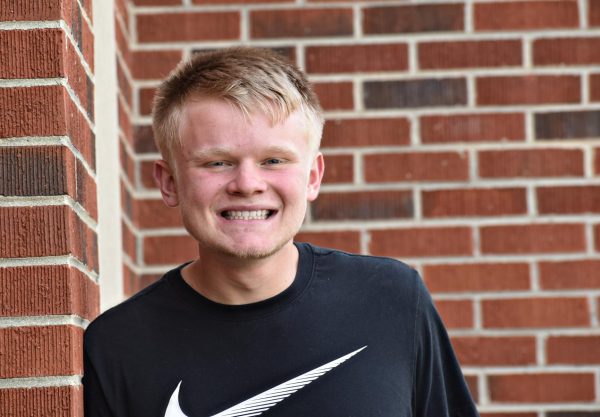The sirens blare as a cop car speeds through the street, flashing red and blue. Being an officer is a job that requires urgency and training. First responders rush out of their cars to help the injured, lock up criminals, and attempt to maintain safety within a community. All are aspects that many are familiar with, but there is more to being an officer than what meets the eye.
On November 1, 2023, the Wildcat Chronicle visited the Elmhurst Police Station to get a good idea of what police officers do behind the scenes.

Upon walking in the station there is a room filled with chairs and tables. This is where the roll call occurs: police officers come into this room at the start of their shift. Not only do they discuss recent events in the area, but also what to look out for as they head out on patrol. This space is also where the officers receive paperwork if they need to fill out forms or other materials.
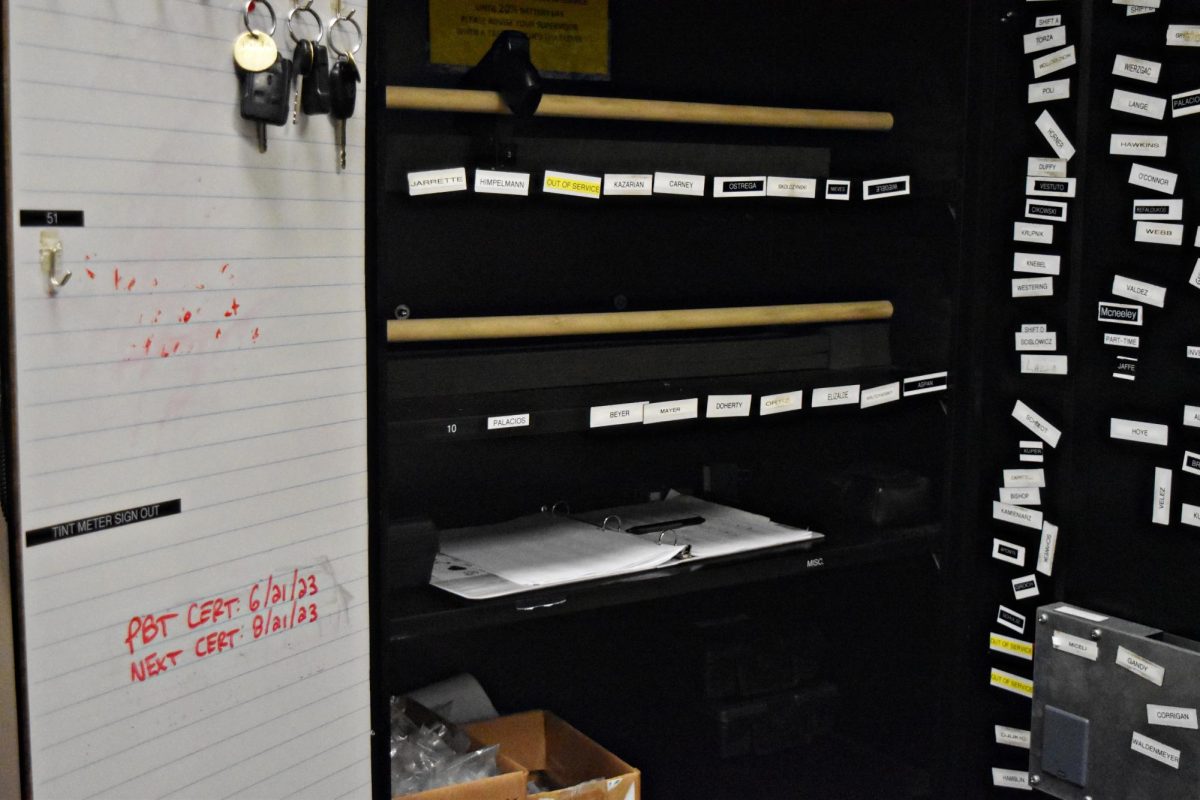
The cops keep their tasers in a cabinet; they charge them up in between shifts to make sure the devices work for their patrol. A spark test affixed to the whiteboard allows the officers to test their tasers before their shift starts to make sure each one works properly.

The report writing room offers small cubicle areas in which the officers can work to write every detail of the calls they attend to: detailed documentation is a must. The room also includes a map of the various territories within the city limits.
“The police station was constructed in 1989 and EPD moved into the building in March of 1990,” Chief of Police Mike McLean said.
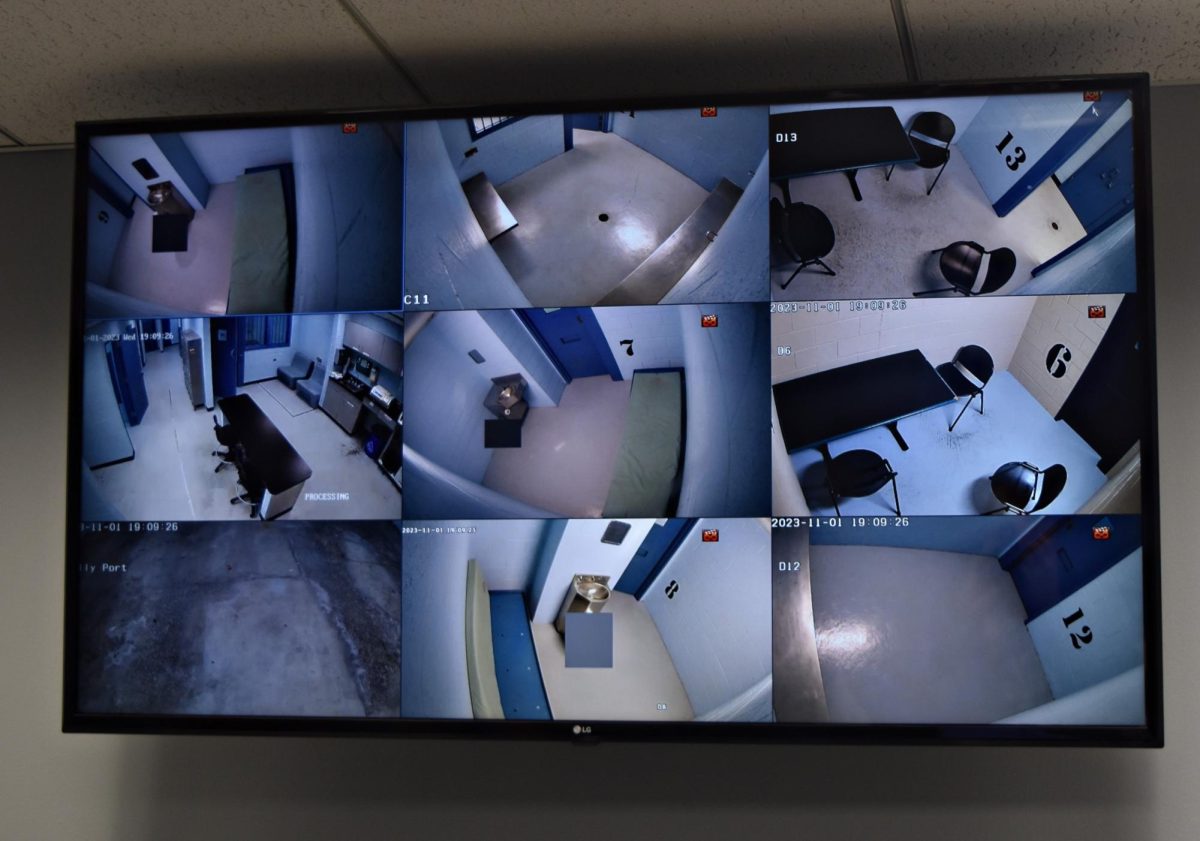
TVs in every room give the officers the ability to look at cameras that monitor the various cells located in the station. Vigilant monitoring is important in case a prisoner acts out or needs some form of assistance in a cell.
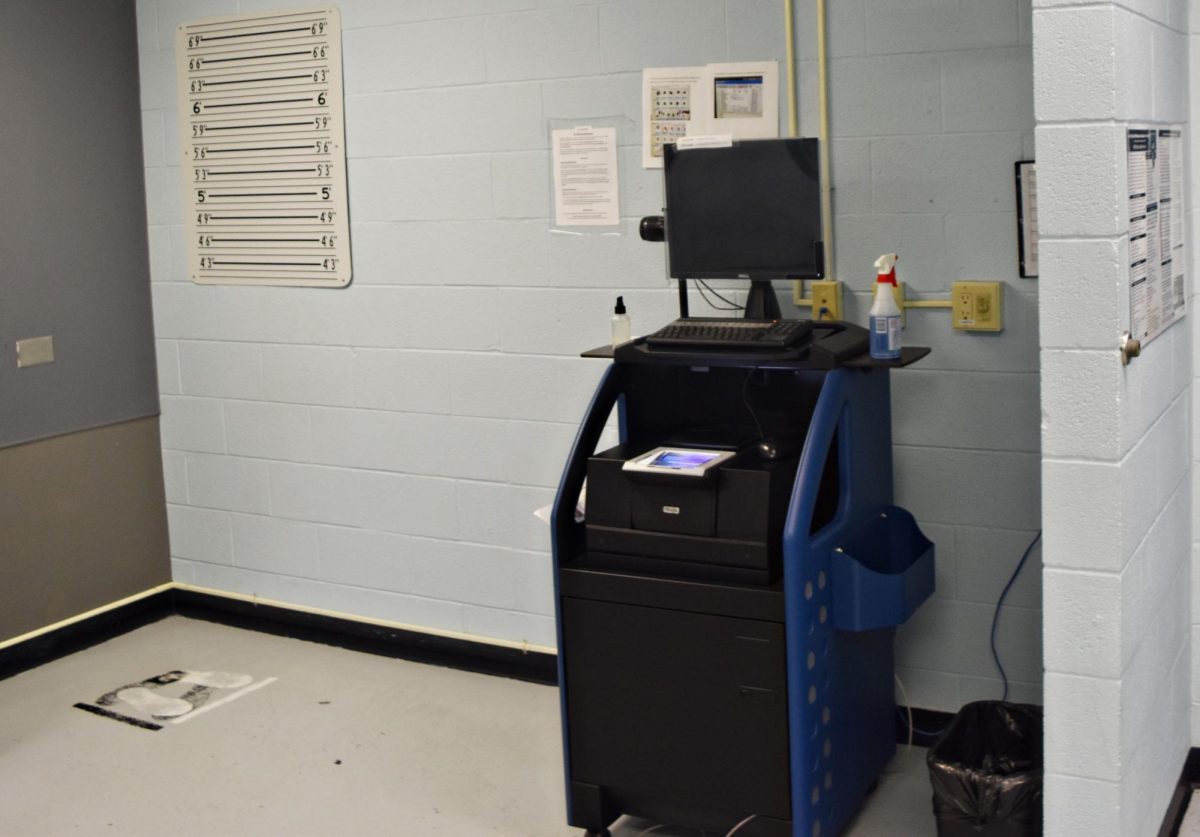
The criminals that are brought in are measured according to the height chart on the wall. While admitted, they get their fingerprints taken and processed into the system: if they commit another crime, they are in the system and can be more readily identified.
“Technology has changed police work over the last 25 years. We’ve moved from handwritten police reports and ink fingerprint cards to countywide digital records systems and laser scanning fingerprints,” McLean said.
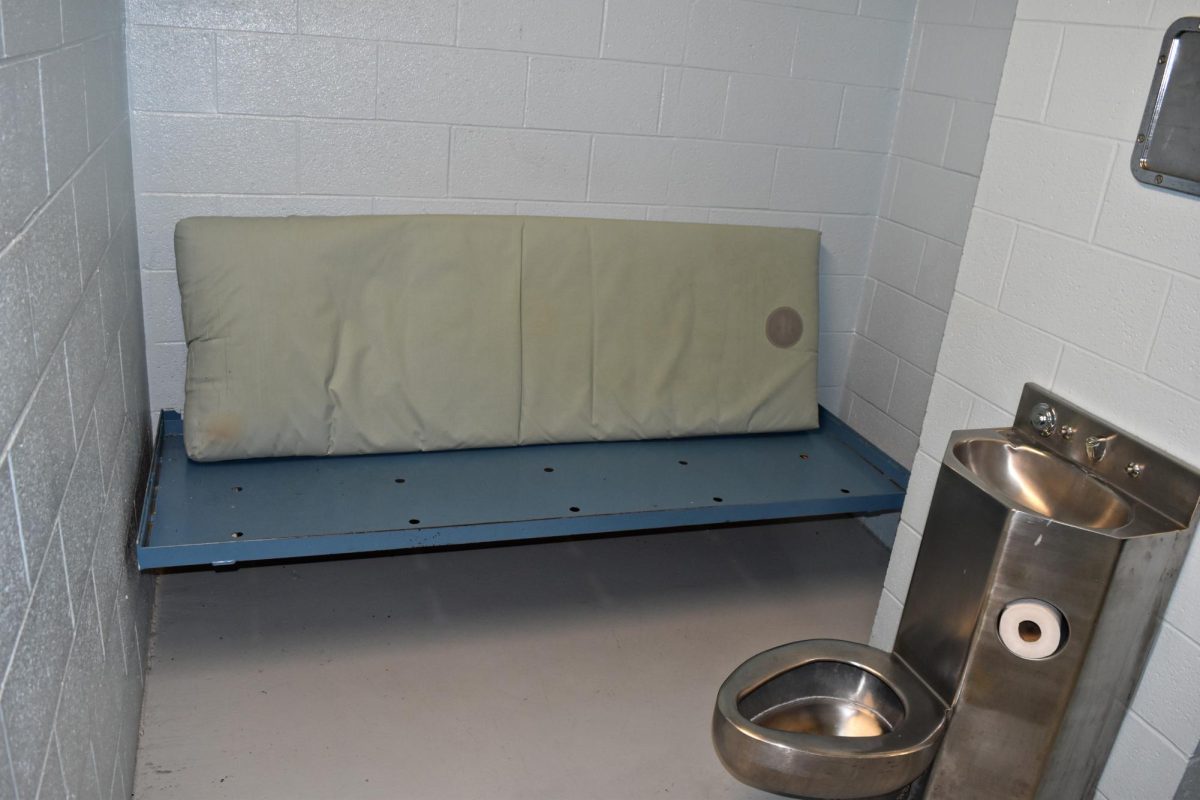
A holding cell where people are brought to when they wait to either get bailed out or transferred to county jail.
“Offenders usually stay in our local lockup for less than 24 hours. Offenders charged with felonies or certain serious misdemeanors are transported to Dupage County where they stay pending their court appearance,” McLean said.

Individuals blow into this machine when they are suspected of being under the influence of alcohol. While there are options that allow for on-the-street testing, some people do not wish to comply, and in that case, this electronic device offers precise readings of their blood alcohol content (BAC).
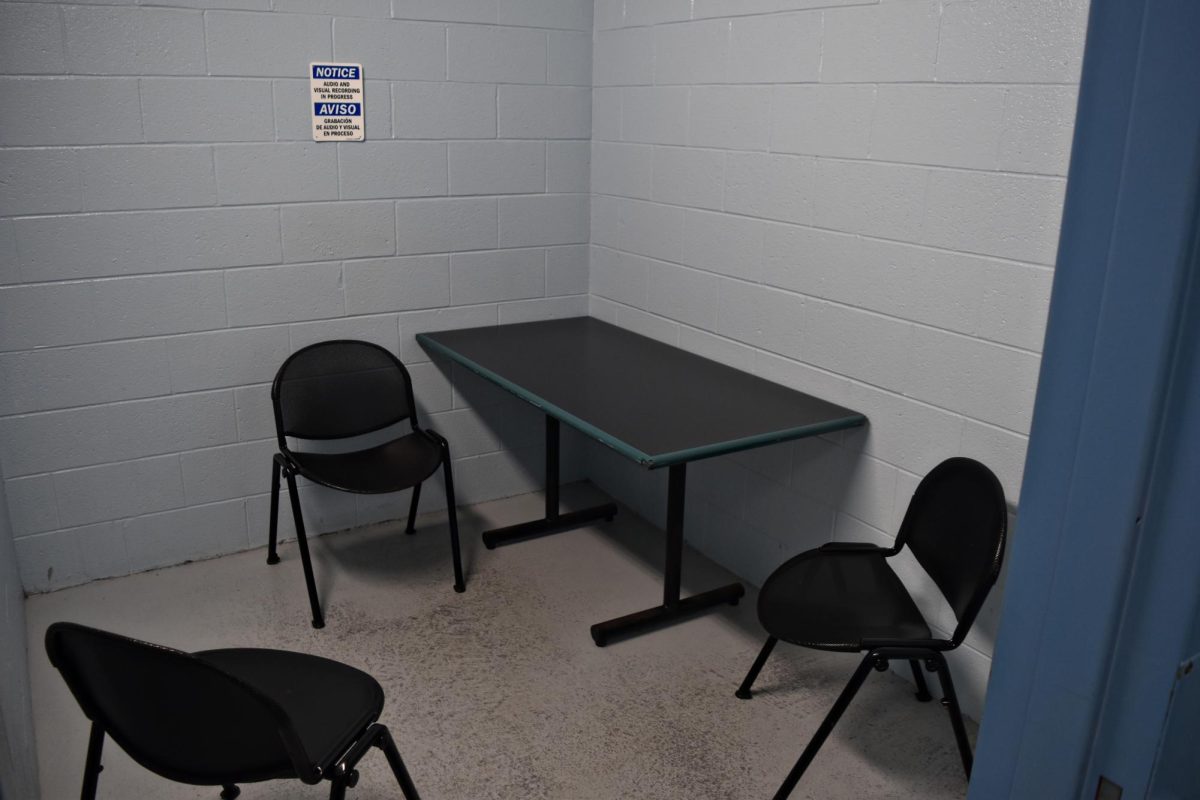
An interview room is also present within the station in order to try and extract the truth. Detectives often ask questions to witnesses or suspects to try and get information. This room is really plain, cold, and gray. It is important to have the room as bare as possible, hoping for suspects to only be fixated on the interview rather than anything else. Of course, anyone questioned has the right to an attorney.
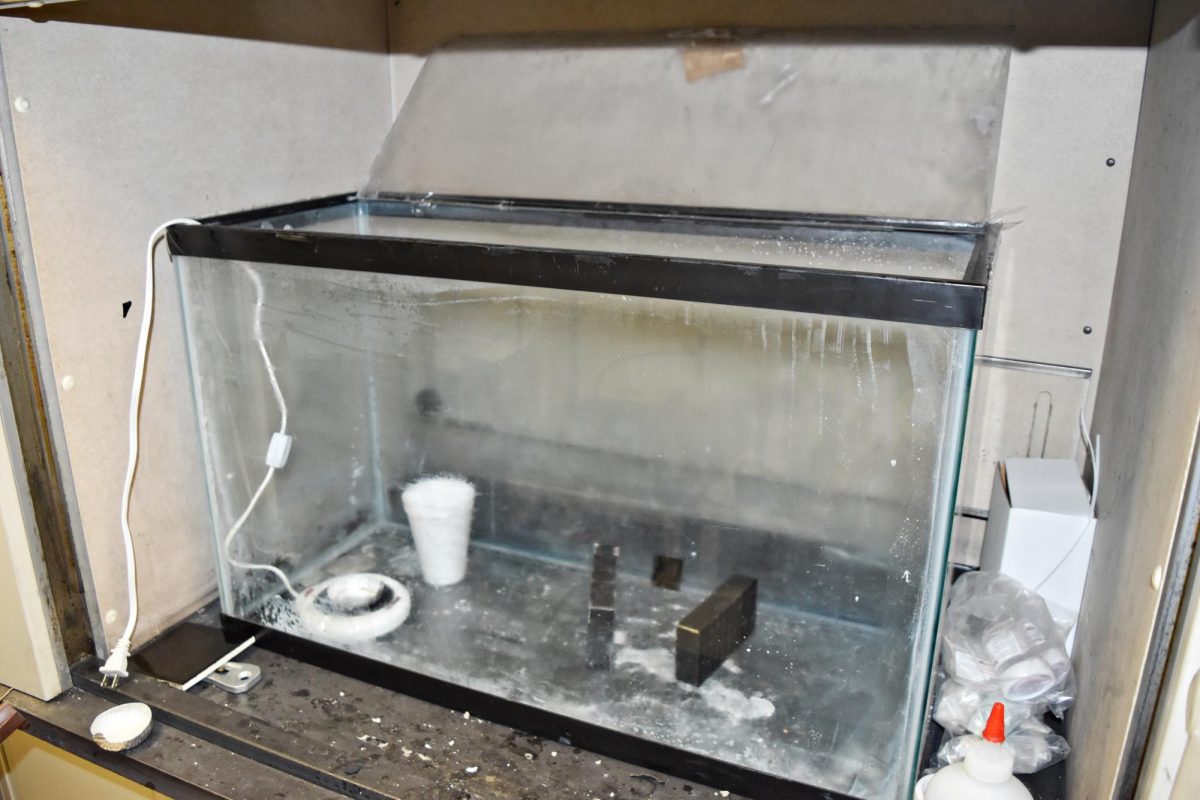
If there are fingerprints on an object, investigators can put that object in this machine and the machine can pull the fingerprints. This room, also located in the basement, is not large but has enough space for evidence testing.
“The most common violent crime in Elmhurst is domestic violence,” McLean said.
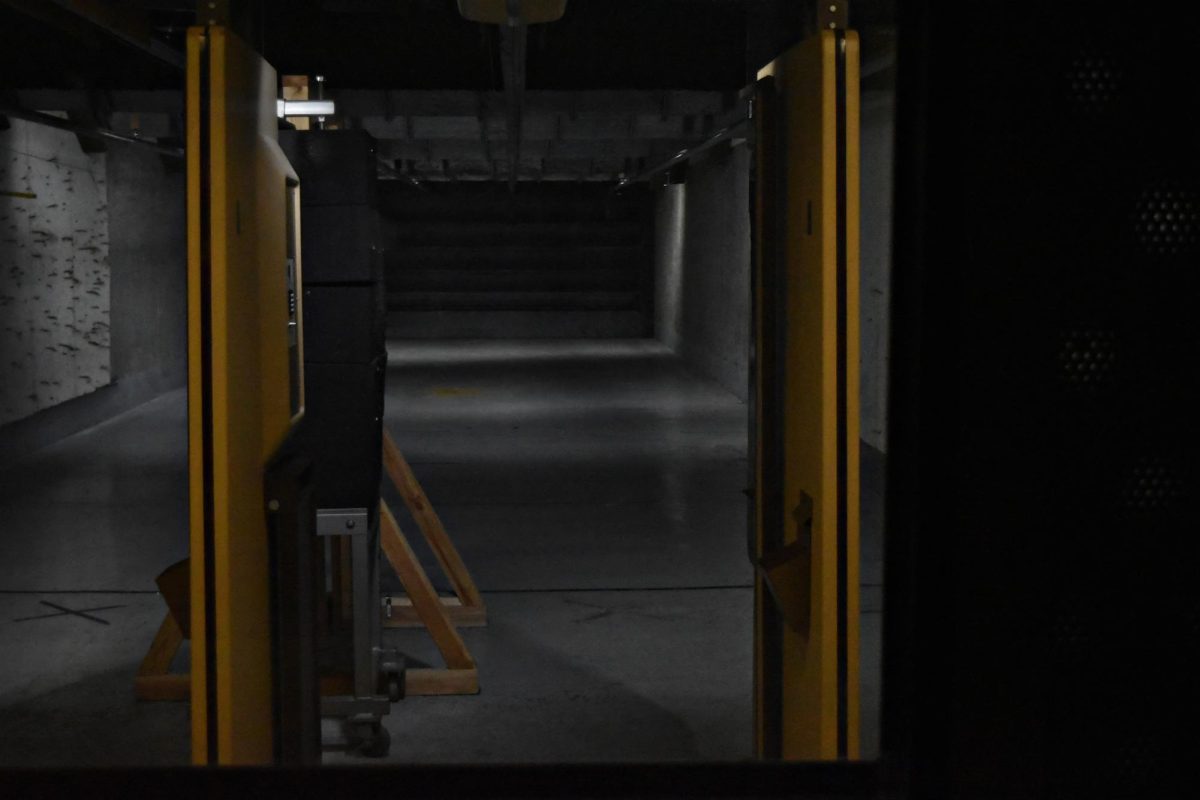
Within the basement of the station, there is a shooting range available to officers which allows them to practice handling a gun at least once a month. Soundproof walls prevent anyone else from hearing gunshots, except those in the room. They can practice with different types of guns, but they are required to carry around a specified firearm. However, in case of an emergency it is important to have knowledge on how to use different guns. Being trained, allows for police officers to be prepared for any situation.
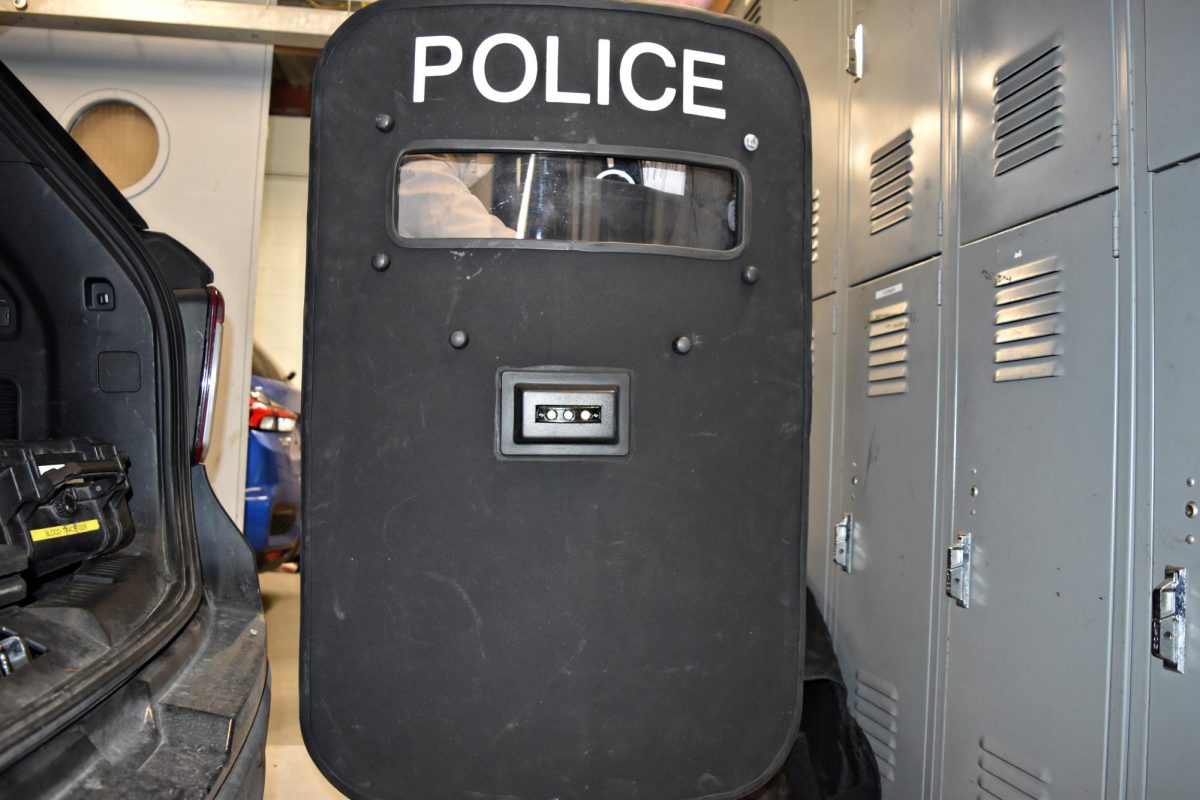
Within the station is a garage, where officers keep their cars which are all equipped with a riot shield used by the SWAT team. They use this when they are going into a potentially dangerous and crowded situation, or when an individual is suspected of having a gun. Although police have a Kevlar vest, sometimes it’s not enough. In more serious instances having a solid shield provides more protection. The shield is used to cover most of their body and or vital organs, weighing about 30 pounds.
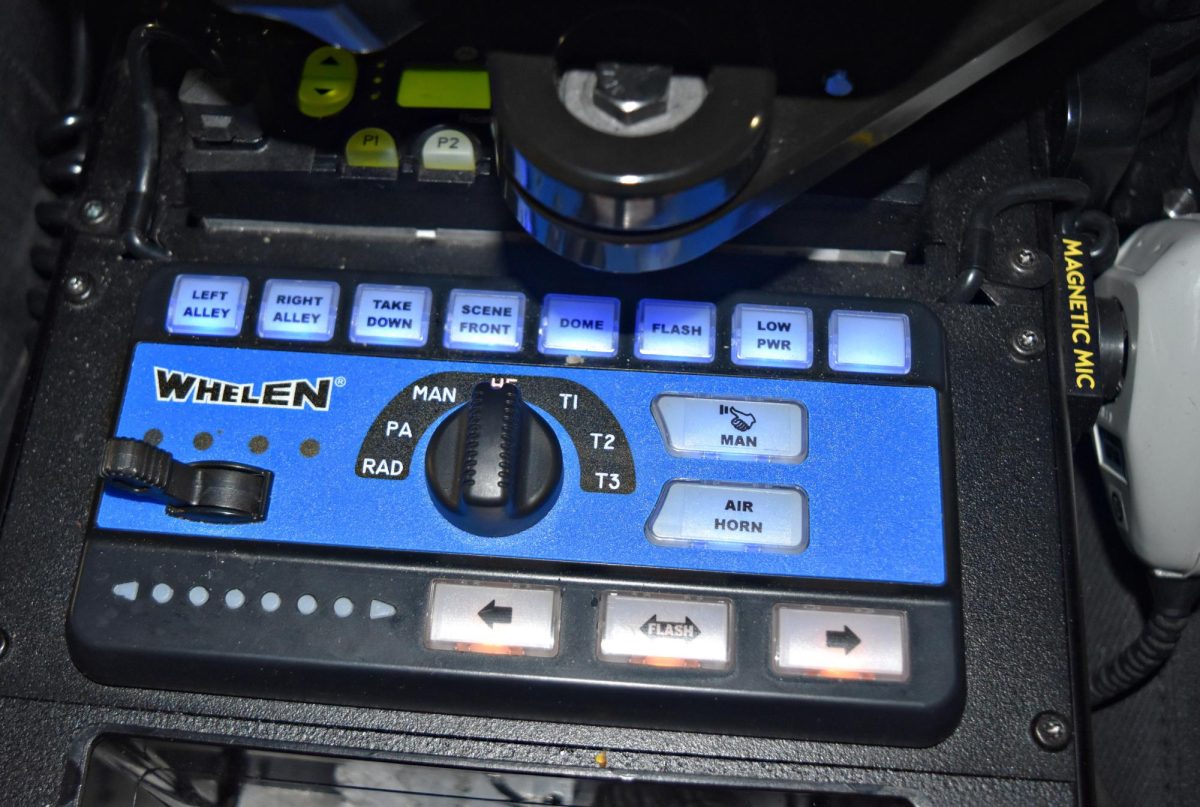
A device controls how officers turn their lights on, along with the volume of the siren. Settings provided allow them to properly warn the public if they need to reach a location urgently. Cooperation is key, stopping while pulling over to the side creates a clear pathway for an officer to reach their destination.
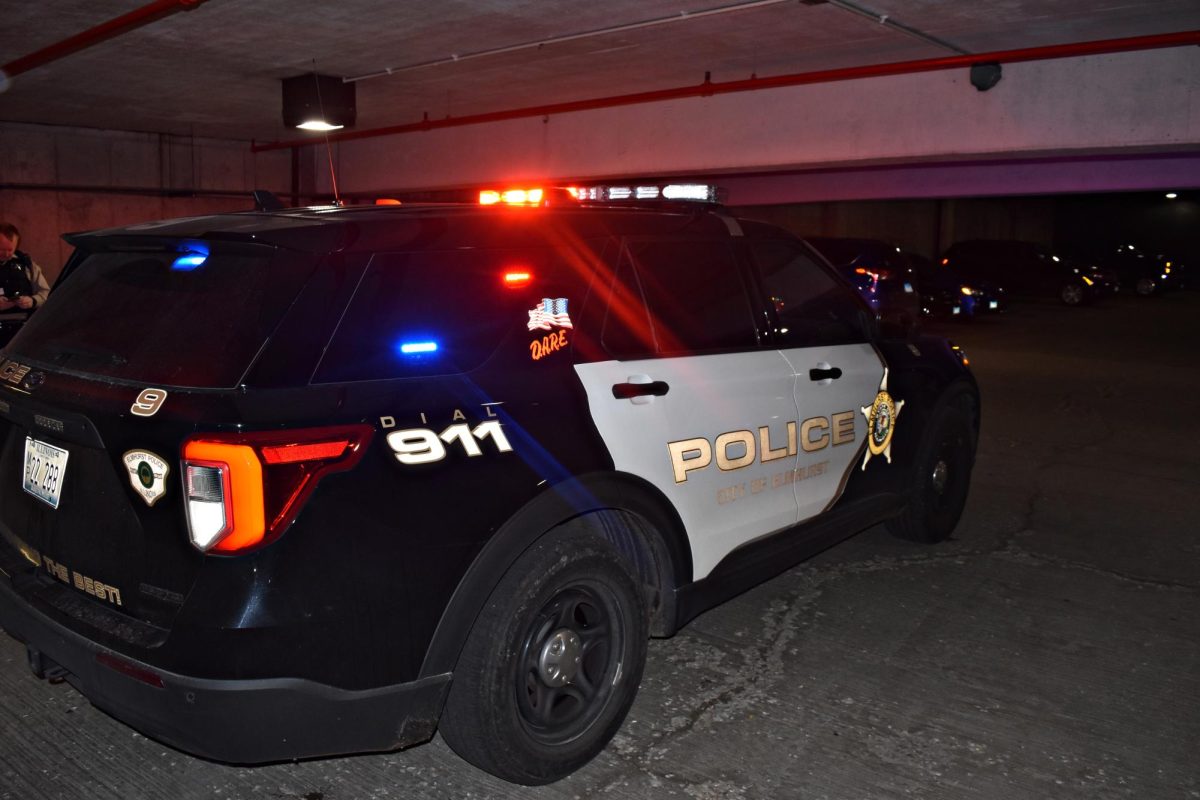
The car that every officer drives, working for the department they are out patrolling in this vehicle.
“Squad car cameras, body cameras, license plate readers, computer forensics, facial recognition, and digital information sharing. Together these technology advancements allow us to communicate vastly more to identify suspects and solve crimes at a faster rate. This job has been made way more complicated than it has in the past,” McLean said.




